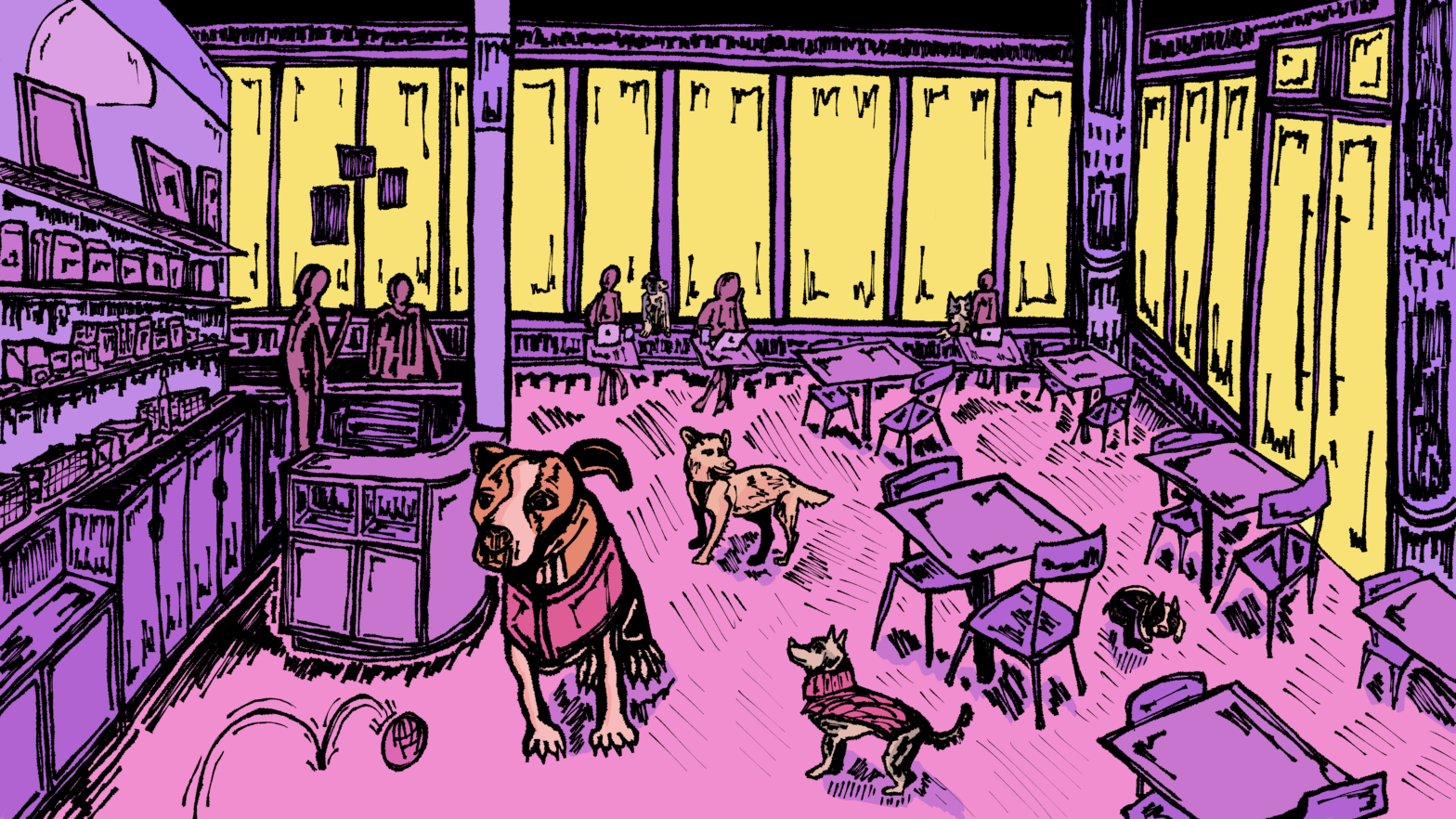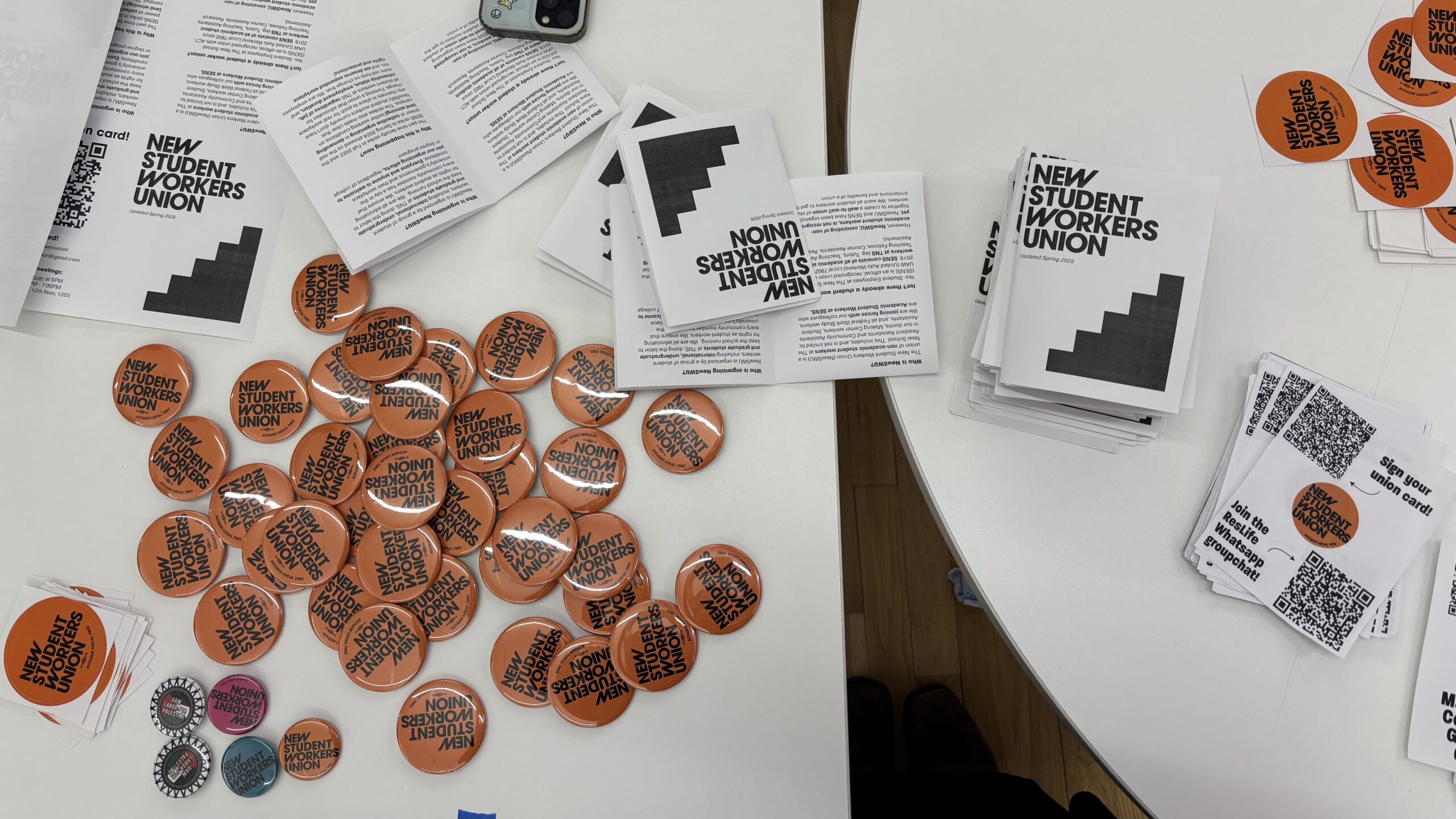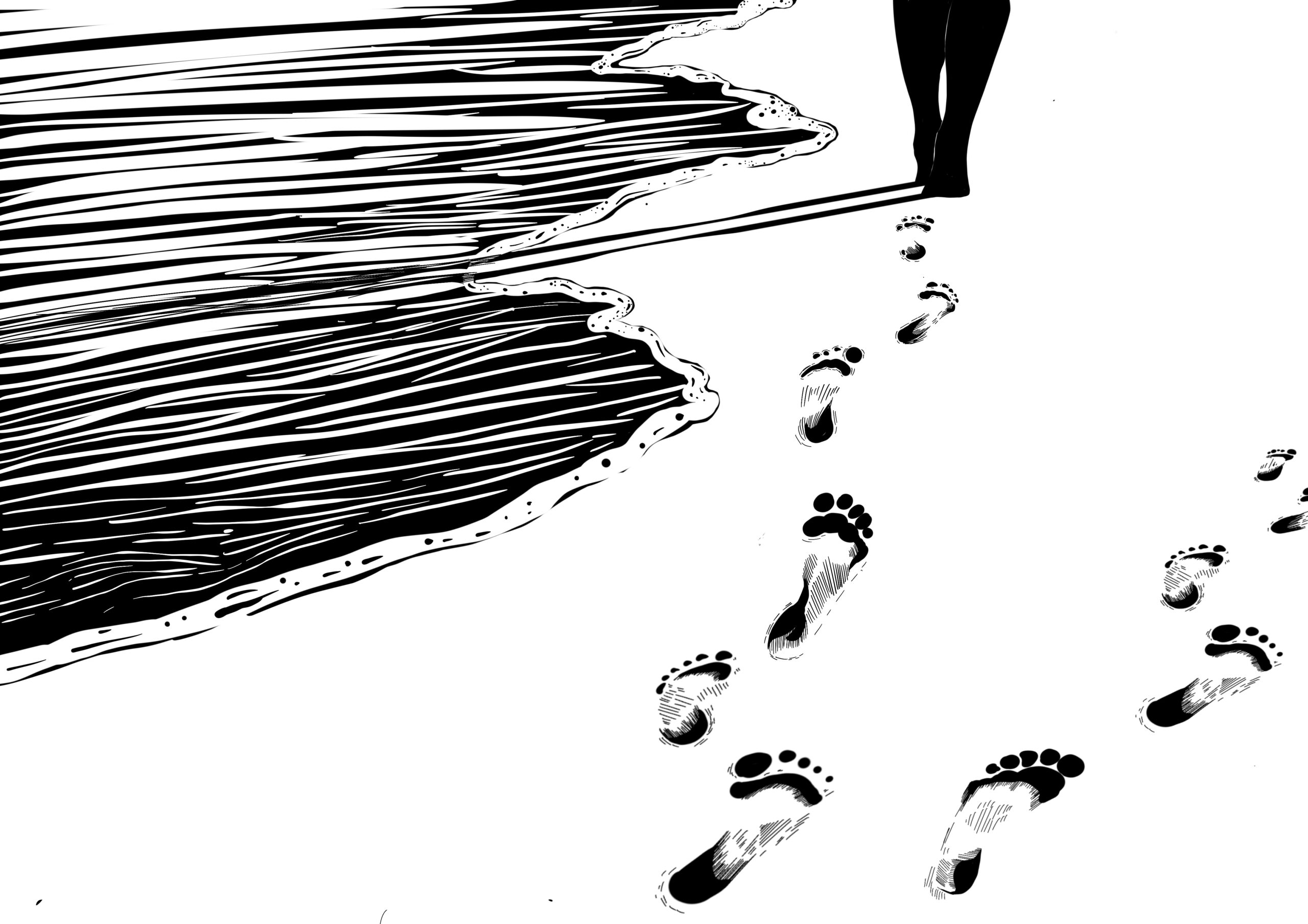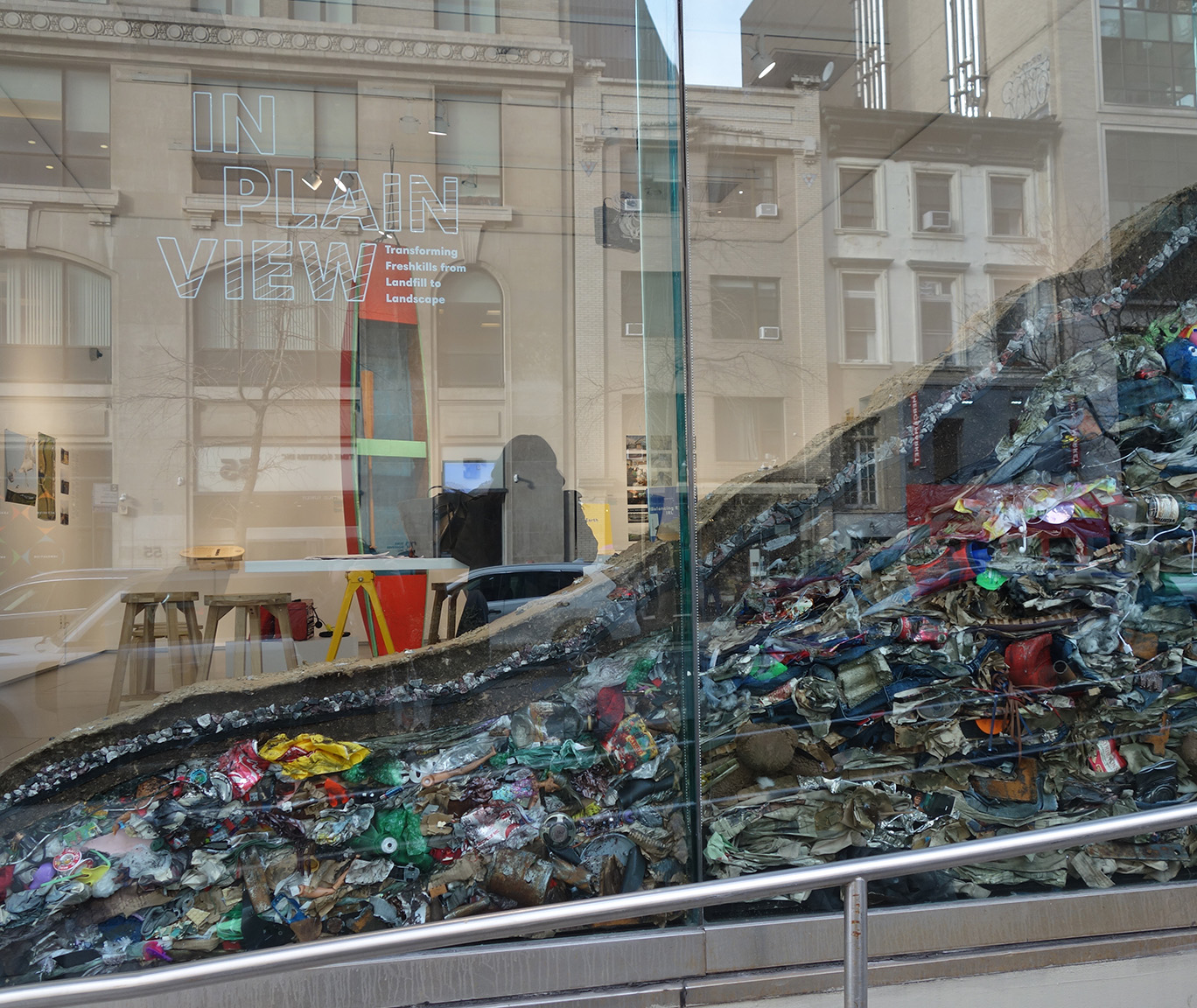Welcome to Writes & Bites — a series where Creative Writing MFA student Arianna Gundlach periodically reviews a place in New York City you could write at and tackles a writing topic that has been weighing on your mind. This week we look at the Williamsburg location of Boris Horton, a dog café, at 510 Driggs Ave., Brooklyn.
Hello, adorable readers and writers. I’ve been expecting you.
As college students away from our families and homes, we face one of the greatest challenges of all — being separated from our pets. I have two beagle-mixes at home that I miss so much. I practically call my dad every day asking to see them. And every time I see a new toy in my local pet store window, I’m tempted to buy it for them.
So while we’re in the city, how do we get a dose of puppy love without having a puppy?
Going for walks and taking inventory of the dogs in our neighborhood? (French bulldogs and dachshunds seem to be favorites in mine). Frequenting dog parks without being the creepy lurker? Mooching off our friends who have pooches of their own? Yes, yes, and yes, but I have something even better for you. Try Boris & Horton, the city’s first dog café.
I originally planned to write about Boris & Horton in February. Then they made the announcement that they were closing both their locations permanently on Feb. 26. Seizing the time left, I visited their East Village location and was instantly charmed by the cute canine community and their classic grilled cheese. This seemed like it was goodbye… but due to an outpouring of support, the café managed to raise $250,000 and was able to reopen on March 11. So here we are! Back in business.
And thank goodness, because Boris & Horton is the best place to soothe your furry, four-legged, wet-nosed withdrawals. New York City dog owners come to this cafe to allow their pups to roam free, interacting with canine friends and fellow dog lovers, while they get work done or at least try to.
While the East Village location has a delightful interior with splashes of color, booth seating, and LED signs, the Williamsburg location is larger and seemingly less busy. Entering the café, you’re faced with two sets of doors. Left leads to the mass seating and dog-friendly section, while right leads to the human food and drink register with some limited seating, no dogs allowed. This double door system is similar to dog parks, making sure dogs don’t leave without their owners. And in the café’s case, separating the food and drink preparation area is a must to meet health codes.
Going left into the dog-friendly section, you can claim a seat and see what great company you’re in. Short, tall, big, small, long-haired, short-haired, curly, wispy mohawked — all are welcome. Adorned with neon harnesses, blue striped dresses, skull and crossbone sweaters, or just a simple collar, you’re easily among the city’s best dressed. It’s hard not to smile surrounded by so many dogs.
When I visited, I particularly adored the bossy pug who greeted each new visitor with a bark, the collie who tried her chances for a treat at every table, the retriever who took himself shopping among the squeaky toys in the merch section, and Maisy (@bigmaisy) the Great Dane-Poodle mix who sported the greatest beard as she made the rounds.
Take note of the hooks around three blue pillars for you to hang your coats and bags. Boris & Horton is not liable for any peed-on items, so take the precaution seriously. Dogs are dogs after all, and accidents happen. If you still need your bag readily accessible, like me, put it on your table or hold it in your lap.
There’s great natural light courtesy of the floor to ceiling windows, and with bench seating (outlets included) along them, I’d say this is the best seat in the house. The dogs seem to agree, since they can be seen lounging next to their owners, dozing in laps, or perched in front of laptops. You can also settle at the red-orange high table with four black stools, at the small high counter beside the long stretch of window-bench seating, or at one of the many single square tables that fill the remaining space.
I recommend enjoying the dogs before ordering and before you tune out the world to work. They will start begging at the sight or smell of food, a large nose appearing by your table before you know it. Though I’d call this a happy surprise.
Your attention is also bound to wander. There’s games of chase and tag, friendly tussles and brawls, and just plain cuteness. Fellow NSFP series writer Kayley Cassidy can personally vouch for the number of times I lost my train of thought during our conversation.
But even with the barking and running, remember this is a space for dogs to be themselves in a city with very limited space for them, especially in an off-leash capacity.
You have three options for ordering: the dog-side of the café, the pick-up side, or the walk-up window outside for to-go orders. You can still order human food on the dog-side of the café, but it will be prepared and retrieved on the pick-up side. There’s also a “secret” fourth option, ordering online via Toast — either download the app or click “order” on Boris & Horton’s website and you’ll be redirected. You can even gain rewards points this way.
After reopening, Boris & Horton now has a suggested visit fee that they’ll ask about when you order. $5 with no dog and $10 with a dog. This helps keep them in business, funding the specifics of a dog café including higher insurance premiums, additional staff for dog hair clean-up and accidents, and disposable eating utensils, plates, and cups (due to City Health Department guidelines). You’ll get a text when you can pick up your order.
The human menu offers specialty drinks named after dogs like The Horton (housemade spicy mocha latte), The Eloise (salty maple latte), The Lassie (lavender agave latte), The Major (brown sugar cinnamon latte), and The Zeus (peppermint mocha). They also have caffeinated classics, tea (hot and iced), lemonade, hot chocolate, and some alcoholic beverages. For food they offer sweet pastries, sandwiches, grilled cheese (three variations), toast, bowls and salads, and some prepackaged snacks.
And for the pups, in case you’re lucky enough to have one in the city, there’s a variety of sweet and savory options that look as good as the human food. Buying treats for the dogs in the café is also an easy way to become a favorite in their eyes. They come running at the rustle of a treat bag. Just make sure to ask their owners if it’s okay first.
Because the drinks are on the weaker tasting side (flavor, not strength), once you find one you like, I’d stick with it. Make it your go-to. It’s my personal belief that it’s better to spend your money on something you know you already like. However, the classic grilled cheese is great. The sharp cheddar is melty and pulls apart in that delicious ooey-gooey way between the two halves.
Finally putting on your headphones and putting up your laptop screen, you may feel a pull-and-tug of emotions. Your heart melts surrounded by so many cute dogs, and it sinks knowing none of them are yours. Boris & Horton has a way of letting you pretend, letting you live vicariously — maybe this isn’t where you come to work with no distractions; maybe it’s where you come to feel and recharge yourself with unconditional love.
Let it fill you up and get ready to unleash it onto the page, because writers, this week we’re talking about infusing your writing with emotion.
Emotion is tricky because readers can sniff out a smidge of inaunthencitiy or cliché from just one wrong word or punctuation mark. So, we must be careful. How much emotion keeps the reader invested and how much is overkill? What makes emotion genuine and vulnerable? How can you use it to gain empathy from a reader?
Watch your exclamation points and fancy dialogue tags, these are usually the beginning of your downfall. As I’ve said before, letting the dialogue speak for itself and contextualizing it with interiority and physicality, is way more important than using words like “exclaimed,” “snapped,” or “blurted.” Good dialogue with the right context will tell you this inflection and tone. As far as exclamation points, they lose their effect the more you use them, especially back-to-back. And please, DO NOT use an exclamation point and “exclaimed” together.
That is the definition of overkill.
Like writing romance, depicting emotion is as much about what’s being said as what’s not. It’s in the little touches, eye shifts, and hand clenches. Dialogue is thought to do a lot of heavy lifting, monologues usually come to mind, but you need to use your full arsenal of craft. Emotion is in word choice, voice, movement, thoughts, and reactions. Use and consider them all.
I’d say the perfect punch of emotion goes physicality, dialogue, interiority, dialogue — all in one paragraph. Here’s what I mean:
She opened the door, her fingers still lingering on the handle. “I don’t want to go.” She couldn’t believe it had come to this. She couldn’t believe she was actually leaving. “Won’t you give me a reason to stay?”
Sympathy, longing, an “aww” moment established in just five short sentences. Now, you may still be drawn to the monologue, which is more hypnotizing in films, but can also be done in books if you know what you’re doing. Monologues can be great for confessions, rants, and explanations that just can’t be given in another way. As far as format, with a multi-paragraph monologue, don’t close your quotation marks until the very end, but use new opening ones at the beginning of every paragraph.
For content, the best advice I can give is to make sure every word, every sentence is necessary and is best delivered in lengthy dialogue. If readers think the information could have been included in descriptions, you’ll start veering into the dreaded “show, don’t tell” territory. I still have not mastered the multi-paragraph monologue in my writing because it tends to border on too much “tell.”
Reading aloud is also an easy way to test if the emotion you’re trying to convey clicks. If you find yourself stumbling over words or thinking, “that doesn’t sound like something a human would say,” there’s probably some editing to be done. A silver lining to having a tearful or rageful day is being able to use it in your writing. Channel your character, using whatever you’re feeling, and fuse them together in your story.
So when you find yourself at Boris & Horton, first and foremost, enjoy the dogs. And when you’re recharged from all the pets, belly rubs, cuddles, and puppy eyes, get the feelings off your chest and onto the page. Try replicating your emotion in your writing, or at least use it to your advantage. If it’s not real, your reader will know. So give it your all and use the complete craft arsenal at your disposal — it’s yours for the making.
Boris & Horton offers many amazing events including adoption events, pet portraits, dog-friendly comedy shows, breed-specific meet-ups, and more. Check their website or Instagram for the full schedule and any recent changes, as well as early closures for private events.
Boris & Horton
510 Driggs Ave.
(212) 320-2226
| Commute 13 minutes from the UC via subway (L) | Hours Daily 8 a.m.-7 p.m. |
| Tech Private Wi-Fi with password at register. Outlets along walls, under bench seating, and outside by sky blue tables. Tappable pay available. No laptops after 10 a.m. on weekends. | Layout Set of double doors to keep dogs inside. Only open one at a time. Left leads to the mass seating and dog-friendly section. Right leads to the order pick-up side with limited seating, no dogs allowed. Limited outdoor seating available too. |
| Gems DOGS; cuteness everywhere; floor to ceiling windows; classic grilled cheese; large dog merch section; frequent events and pop-ups. | Noise Level Somewhat noisy. |
| Atmosphere Interior pops of sky blue and yellow. Chill, upbeat vibes. Music is set at a low volume, usually hard to hear over conversations and barking. | Be Aware Suggested visit fee of $5 with no dog and $10 with. Hang up your jackets and bags to avoid accidents. Bathroom and deep sink in the back. Optional monthly membership ($40). |
| Rating 3/4 Stars – based on The New York Times star system: “ratings range from zero to four stars. Zero is poor, fair or satisfactory. One star, good. Two stars, very good. Three stars, excellent. Four stars, extraordinary.” |








Leave a Reply